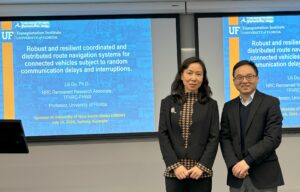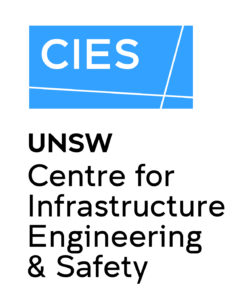
We were honoured to welcome Professor Lili Du at UNSW on July 15, 2024, where she delivered a seminar on the topic of ‘Robust and Resilient Coordinated and Distributed Route Navigation Systems for Connected Vehicles Subject to Random Communication Delays & Interruptions.’ The seminar was hosted by the RIIS Hub and Civil Engineering’s Centre for Infrastructure Engineering and Safety. 
Dr. Lili Du’s expertise lies at the intersection of transportation engineering, data analytics, and emerging technologies, making her a valuable contributor to the field of civil and coastal engineering. You can find more information about her on the University of Florida website
Abstract:
In recent years, wireless communication, onboard computation facilities, and advanced sensor techniques have enabled the development of well-connected, data-rich transportation systems, known as connected vehicle systems (CVS). Despite the potential of CVS to smartly route travelers and avoid traffic congestion, researchers have identified a significant issue: as the majority of vehicles become connected, the current real-time information provision and routing methods can actually worsen traffic congestion. This occurs because each connected vehicle still independently selects its shortest path, leading to a misalignment between system performance and individual vehicle route choices. Additionally, those emerging communication and information technologies make our routing navigation systems vulnerable to cyber reliability and security issues, such as communication delays and interruptions. Motivated by this view, our studies have introduced robust and resilient coordinated and distributed route navigation systems for connected vehicles subject to random communication delays and interruptions. Our novel route navigation algorithms used game theories to coordinate CVs’ routing decisions en route to address the overreaction phenomenon and employed robust distributed optimization and advanced computing technologies to enhance the system’s resilience against communication failures caused by infrastructure malfunctions or cyberattacks. Numerical experiments conducted on the Sioux Falls network validated and confirmed the effectiveness of our approaches.